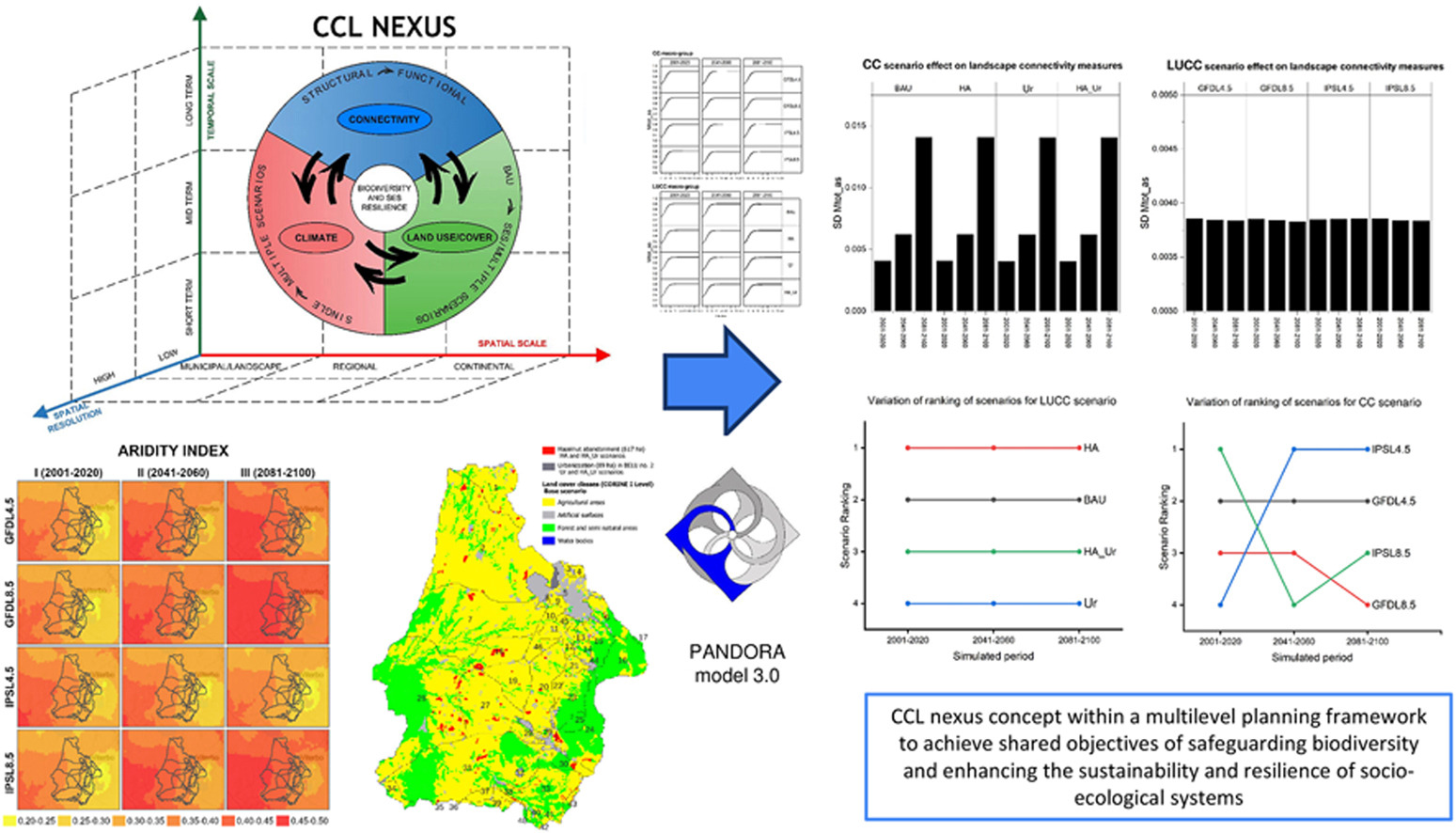
The way in which landscapes interconnect and land use changes has a deep impact on the wellbeing of both our planet and societies. Understanding these global processes can help inform conservation strategies and land use plans, particularly on a local scale. “The main message is that a sustainable future depends on balancing development with environmental conservation,” says CMCC researcher Sergio Noce. “Today, there is widespread awareness of these issues. It is time to integrate this knowledge into urban planning.”
A new study involving CMCC researchers Sergio Noce and Chiara De Notaris investigates how urban expansion and climate change can negatively affect natural ecosystems and reduce biodiversity, highlighting the importance of planning urban development in a way that protects nature and landscape connectivity, which could come in the form of green spaces and wildlife corridors for example.
“Landscape connectivity is, first and foremost, the way different natural habitats are linked, allowing species to move and interact. It plays a key role in maintaining biodiversity and supporting healthy ecosystems,” says Noce. “This study further emphasizes that an integrated approach is essential to address these issues. Only by considering all the variables that influence each other as a whole can more effective choices be made.”
In one of its most significant findings, the study shows that urbanization has an even more significant effect on landscape connectivity than climate change. “Land use changes affect connectivity more than climate change, highlighting the importance of smart urban planning to protect nature,” says De Notaris.
This conclusion is reached through the use of an innovative approach to investigating how climate change, land use changes, and landscape connectivity are interconnected, namely the CCL nexus.
The CCL nexus’ multiple impacts for land use planning aims in the Mediterranean region are then processed using the unique model PANDORA, developed by Tuscia University researchers, which allows the researchers to assess how changes in land use and climate impact natural ecosystems and reduces their connectivity at landscape level, as well as the advantages and limitations of using PANDORA as a tool for land use planning.

Graphical abstract of the paper. Source: Pelorosso et al 2025.
The results show that urban development might have a bigger effect on nature than climate change, challenging some commonly held ideas and highlighting the need to consider the CCL nexus in urban planning as it can aid in understanding human-nature interactions.
CMCC contributed to the study by providing and processing carefully selected climate data which was then used as input for the models underpinning the study.
“This study showed how land-use change is the main factor affecting landscape connectivity, both negatively and positively. Indeed, the opposite scenario to urban expansion was the renaturalization of agricultural land, which ensured the highest level of landscape connectivity. In addition to urban planning, this calls for the need to radically change our food production systems to safeguard both ecosystems and human well being,” says De Notaris.
For more information:
Raffaele Pelorosso, Sergio Noce, Chiara De Notaris, Federica Gobattoni, Ciro Apollonio, Andrea Petroselli, Fabio Recanatesi, Maria Nicolina Ripa, The nexus between connectivity, climate, and land use: A scenario assessment of bio-energy landscape connectivity in central Italy, Journal of Environmental Management, Volume 376, 2025, 124521, ISSN 0301-4797, https://doi.org/10.1016/j.jenvman.2025.124521


